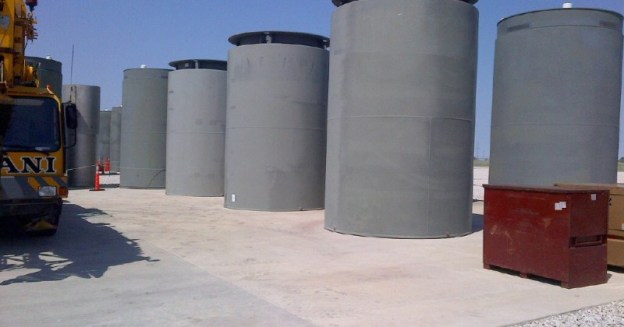Companies specializing in the handling of radioactive material are buying retired U.S. nuclear reactors from utilities and promising to clean them up and demolish them in dramatically less time than usual — eight years instead of 60, in some cases. Turning nuclear plants over to outside companies and decommissioning them on such a fast track represents a completely new approach in the United States, never before carried to completion in this country, and involves new technology as well…
Once a reactor is shut down, the radioactive mess must be cleaned up, spent nuclear fuel packed for long-term storage and the plant itself dismantled. The most common approach can last decades, with the plant placed in a long period of dormancy while radioactive elements slowly decay. Spent fuel rods that can no longer sustain a nuclear reaction remain radioactive and still generate substantial heat. They are typically placed in pools of water to cool, staying there for at least five years, with 10 years the industry norm, according to the Nuclear Regulatory Commission. After that, they are removed and placed in giant cylindrical casks, typically made of steel and encased in concrete.
But Holtec International, which in the past year has been buying up several retired or soon-to-be-retired nuclear plants in the U.S., has designed a cask it says can accept spent fuel after only two years of cooling. Holtec struck a deal last year to buy Oyster Creek in Forked River, New Jersey, from its owner, Exelon Generation. It also has deals in place to buy several plants owned by Entergy Corp., including: Pilgrim, in historic Plymouth, Massachusetts, closing May 31; Palisades, in Covert, Michigan, set to shut down in 2022 ; and two reactors expected to close within two years at Indian Point in Buchanan, New York…. NorthStar Group Services, a specialist in nuclear demolition, completed the purchase of Vermont Yankee from Entergy with plans for its accelerated decommissioning.
The companies jumping into the business believe they can make in profit….Holtec will inherit the multibillion-dollar decommissioning trust funds set up by the utilities for the plants’ eventual retirement. , The company would be able to keep anything left over in each fund after the plant’s cleanup. By Holtec’s accounting, for instance, the Pilgrim decommissioning will cost an estimated $1.13 billion, leaving $3.6 million in the fund. Holtec and Northstar are also banking on the prospect of recouping money from the federal government for storing spent fuel during and after the decommissioning, because there is no national disposal site for high-level nuclear waste…
Holtec has come under scrutiny over its role in a mishap in August 2018 during the somewhat less aggressive decommissioning of the San Onofre plant in Southern California, where two reactors were retired in 2013 and the estimated completion date is 2030….Holtec contractors were lowering a 45-ton spent fuel cask into an underground storage vault at San Onofre when it became misaligned and nearly plunged 18 feet, investigators said. No radiation was released. Federal regulators fined Southern California Edison, the plant’s owner, $116,000, and an investigation found that some Holtec procedures had been inadequate or not properly followed.
BOB SALSBERG , Speedy reactor cleanups may carry both risks and rewards, Associated Press, May 21, 2019


